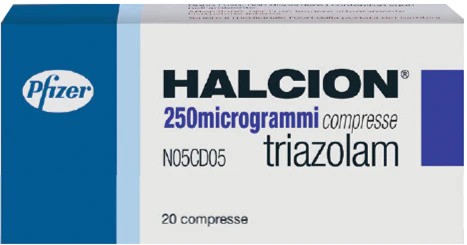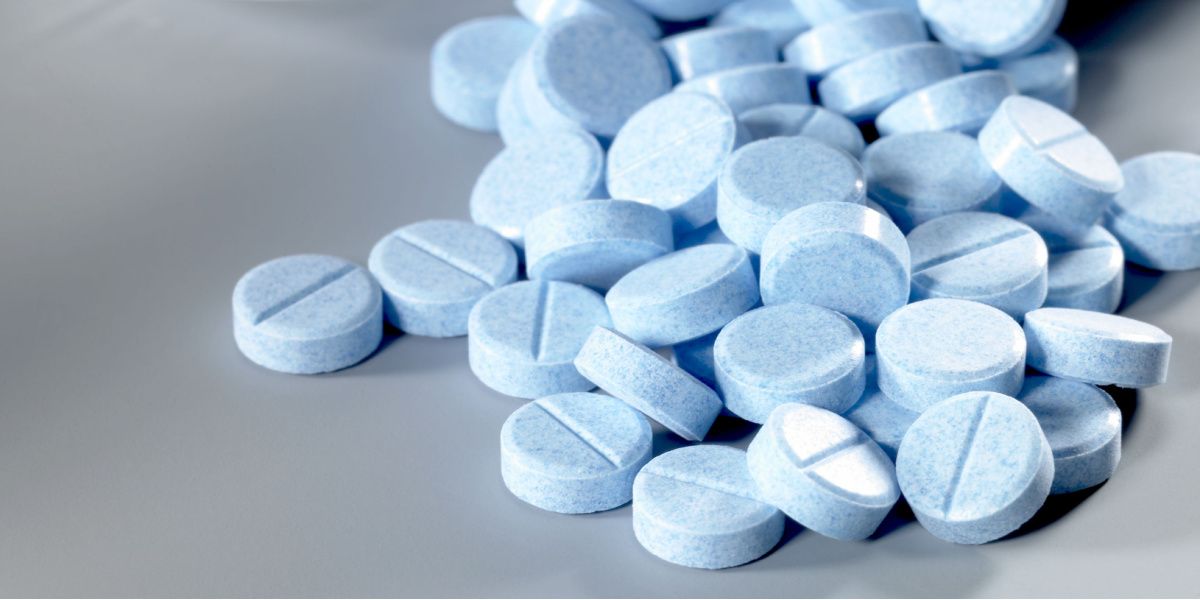Halcion is a brand-name medication containing triazolam, a benzodiazepine used to treat insomnia. It is typically only prescribed for short-term use, of 7-10 days. Halcion and other benzodiazepines are Schedule IV controlled substances, due to their potential for abuse and addiction. Halcion can cause physical dependence, which can lead to withdrawal symptoms when the medication is stopped. [1]

Does Halcion cause withdrawal symptoms?
Halcion is likely to cause withdrawal symptoms after several days or weeks of use, particularly if it is stopped abruptly. As such, it should only be used for a short time, or in the case of prolonged use, a gradual reduction in dosage is recommended. [1]
Benzodiazepines, such as Halcion, can cause physical dependence to develop rapidly, within one to two weeks of regular use. Physical dependence causes withdrawal symptoms to occur once the medication is stopped and can contribute to the risk of misuse or abuse of Halcion. [2][3]
Abusing Halcion, or taking large doses for prolonged periods, can increase the risk of physical dependence and may lead to severe benzodiazepine withdrawal symptoms. [4]
Halcion has a half-life of 1-3 hours, so it is short-acting and quickly leaves the body, causing withdrawal symptoms to emerge very soon after the last dose. This can mean that withdrawal symptoms occur during the day, in between nightly doses. [1]
Halcion withdrawal symptoms
Discontinuing Halcion can often result in withdrawal symptoms, particularly when stopping abruptly. These can range from mild symptoms to severe withdrawal syndrome.
Common Halcion withdrawal symptoms include: [1][2]
- Cramps and pain in the stomach or muscles
- Nausea
- Vomiting
- Sweating
- Tremors
- Low mood
- Perceptual disturbances
- Anxiety
- Agitation
- Sleep disturbances
- Rebound insomnia, which can last several days and is sometimes worse than insomnia prior to Halcion use
- Cravings
Severe Halcion withdrawal symptoms can include: [1][2][3]
- Seizures or convulsions
- Extreme mood changes, such as suicidal thoughts, aggression, or psychosis
Halcion withdrawal timeline
Halcion has a very short half-life, which means that the medication leaves the body very quickly. This can cause the onset of withdrawal symptoms within several hours of the final dose. Additionally, withdrawal symptoms, such as anxiety and agitation, can frequently occur in between doses. [1]
Benzodiazepine withdrawal symptoms can last anywhere from several days to several months. They can range from mild effects to severe withdrawal syndrome, which might include seizures. Halcion withdrawal symptoms can be more severe than longer-acting benzodiazepines but may be alleviated within a shorter time. [2][4]
Withdrawal symptoms tend to be more severe and persistent following heavy and prolonged Halcion use and may vary depending on underlying physical and mental health conditions. [1][5]
Halcion cessation timeline
In many cases, Halcion does not require a cessation schedule because of its short half-life, particularly if it has been used for a short period. However, if it has been used for a prolonged period or in heavy doses, gradual tapering may be recommended. [1][6]
This can vary from person to person, but it is generally advised to reduce the daily dosage by 5-50% every few days, in order to prevent or reduce severe withdrawal symptoms. [5][6]
The prescribing doctor can advise on individual cessation timelines and will monitor and treat any withdrawal symptoms that occur during this time. [2]
Is Halcion safe to withdraw from at home?
If Halcion has been used as prescribed and for a short period, it may be safe to withdraw at home, with professional advice. However, if Halcion has been used in heavy doses or misused, it may cause severe withdrawal symptoms that require professional monitoring. It is recommended to always consult with a doctor prior to discontinuing Halcion use. [1]
Individuals who choose to withdraw from Halcion at home should inform family and friends so that they are aware of potential dangers or adverse effects and can contact a professional if required. Some people may require an inpatient or outpatient treatment program to safely withdraw from Halcion, especially if it has been used or abused for an extended period. [4]
Halcion detox treatment
Halcion detox can require professional intervention, which can be provided in outpatient or inpatient treatment programs. Often, Halcion detox can take place through outpatient treatment, during which the individual will attend appointments with a clinician to receive medicinal and/or therapeutic treatments. [4][5]
In some cases, it may be necessary to attend an inpatient treatment program for Halcion detox, particularly if other substances are being used or the individual is experiencing physical or mental health issues. Inpatient treatment can provide consistent monitoring and treatment of withdrawal symptoms while providing medicinal treatment, individual and group therapies, and holistic therapies. [4]
Sometimes a long-acting benzodiazepine, such as diazepam, is prescribed during Halcion detox, as this can help reduce the risk and severity of withdrawal symptoms and allow for a gradual taper. Additional medications can be prescribed to help reduce withdrawal symptoms such as anxiety, seizures, and insomnia, including antidepressants and anticonvulsants. [5]
Depending on the needs of the individual, therapeutic interventions can be commenced and continued during the detox and recovery process, such as psychosocial interventions, support groups, individual or group psychotherapy, and holistic therapies. [2][4]


.svg?v=1722504390)

